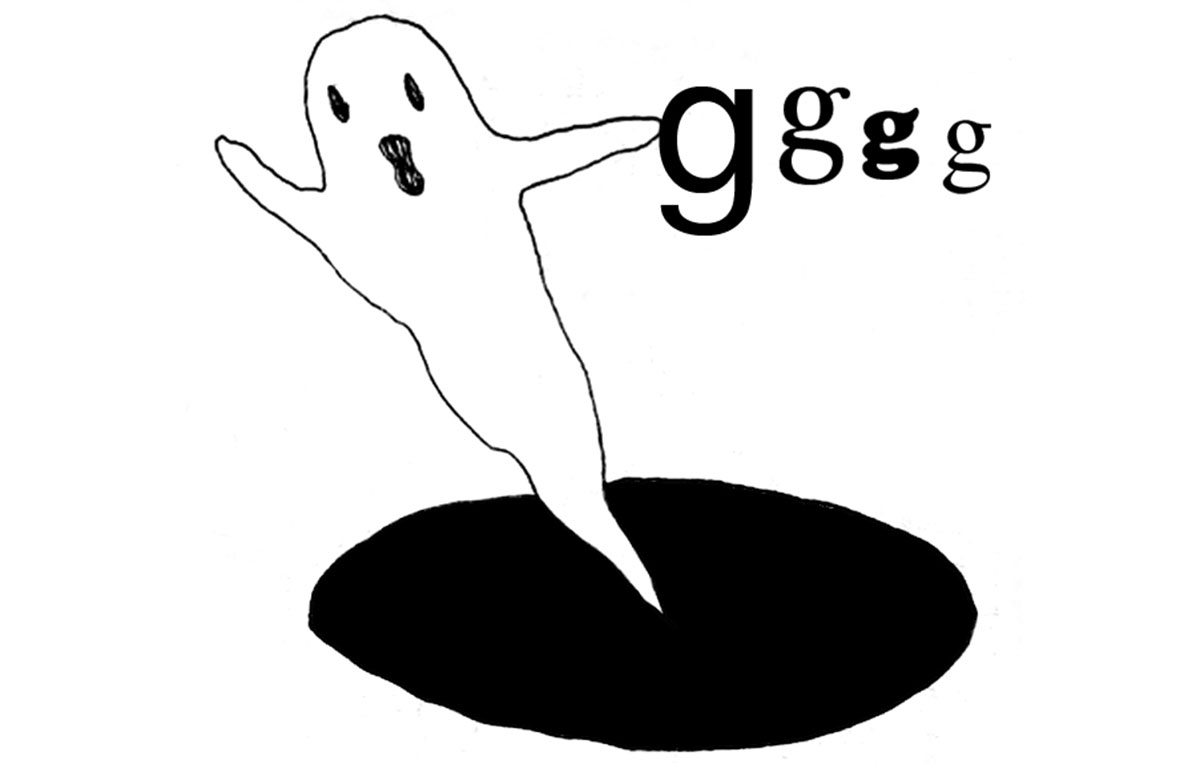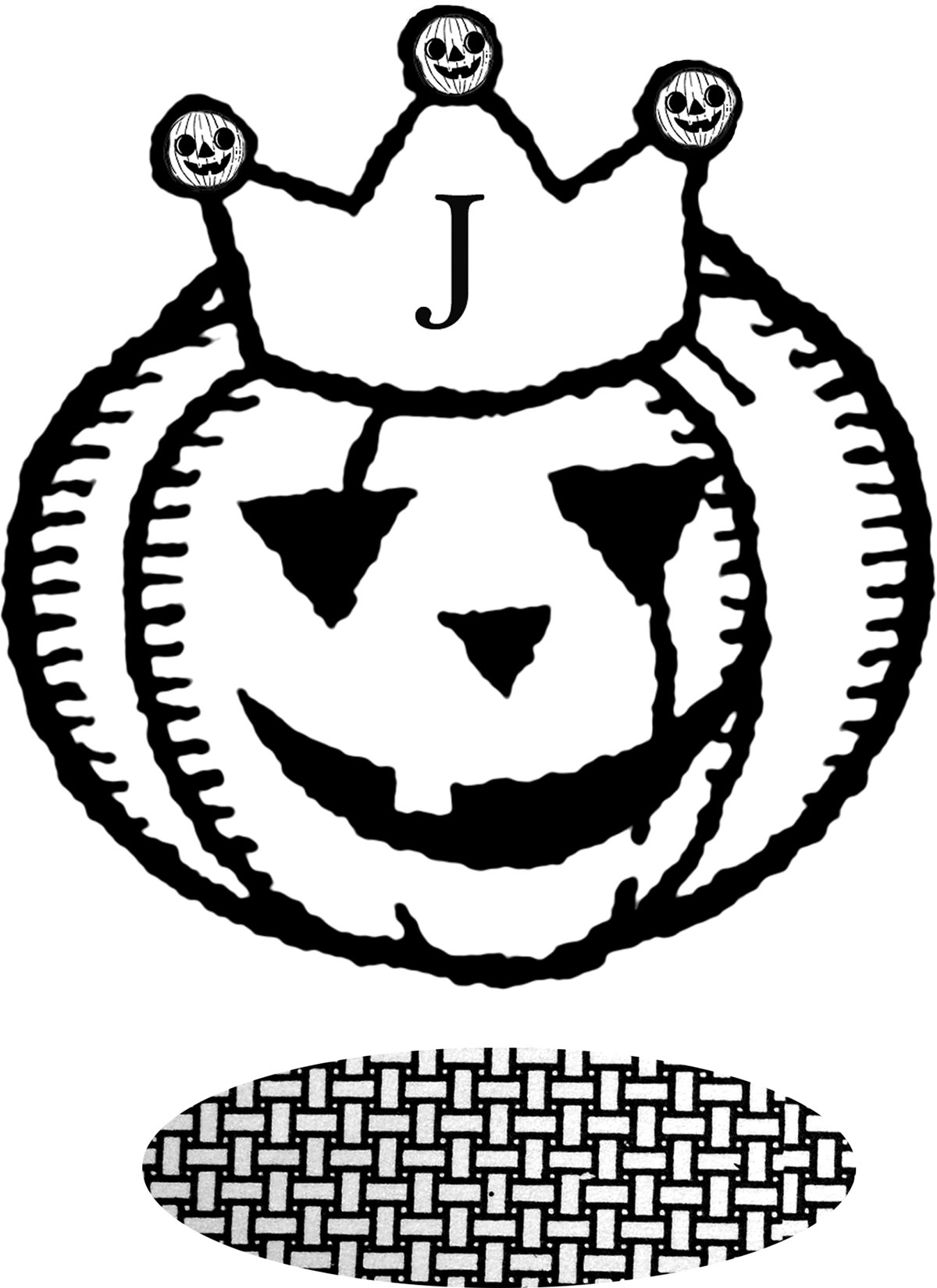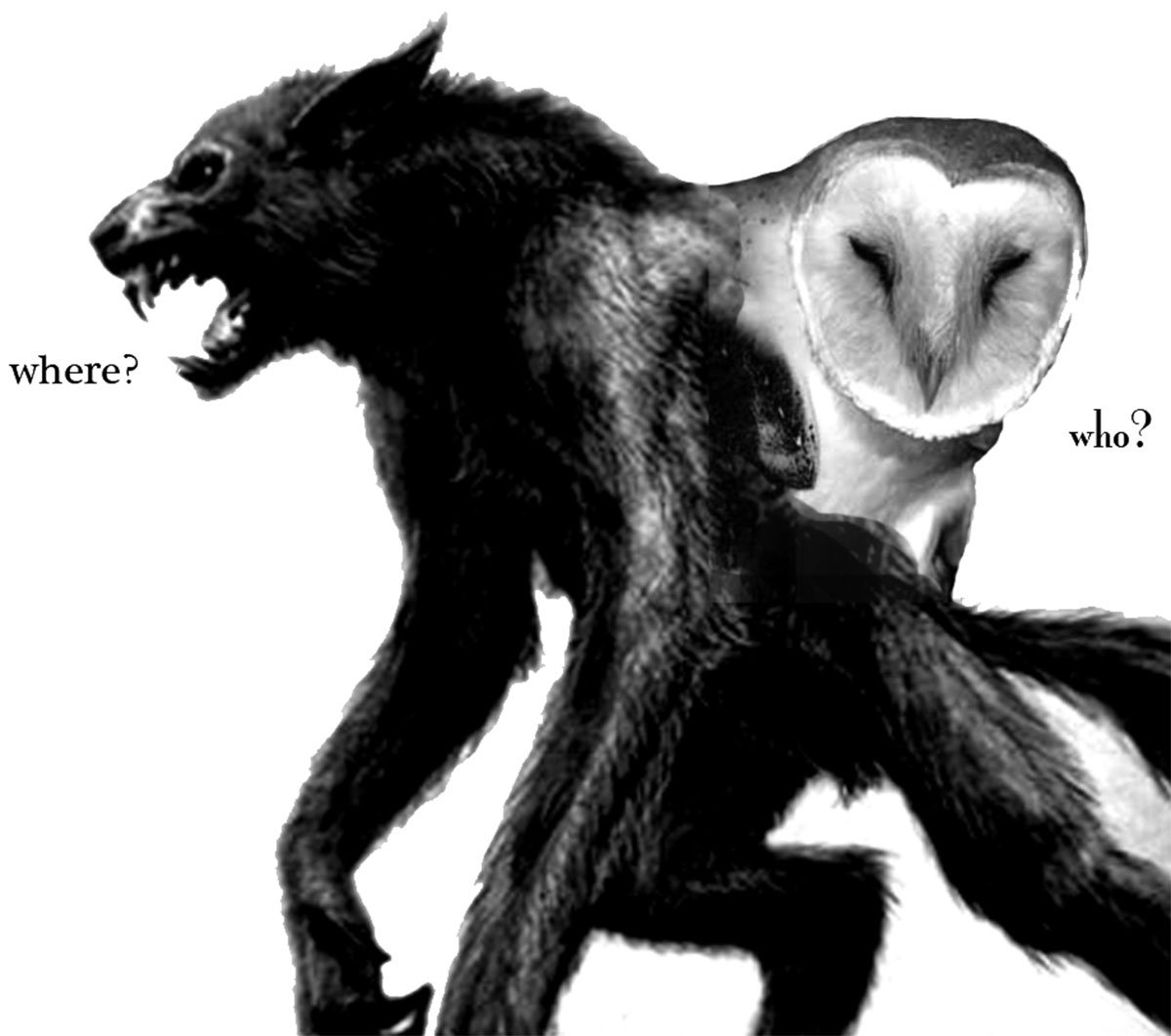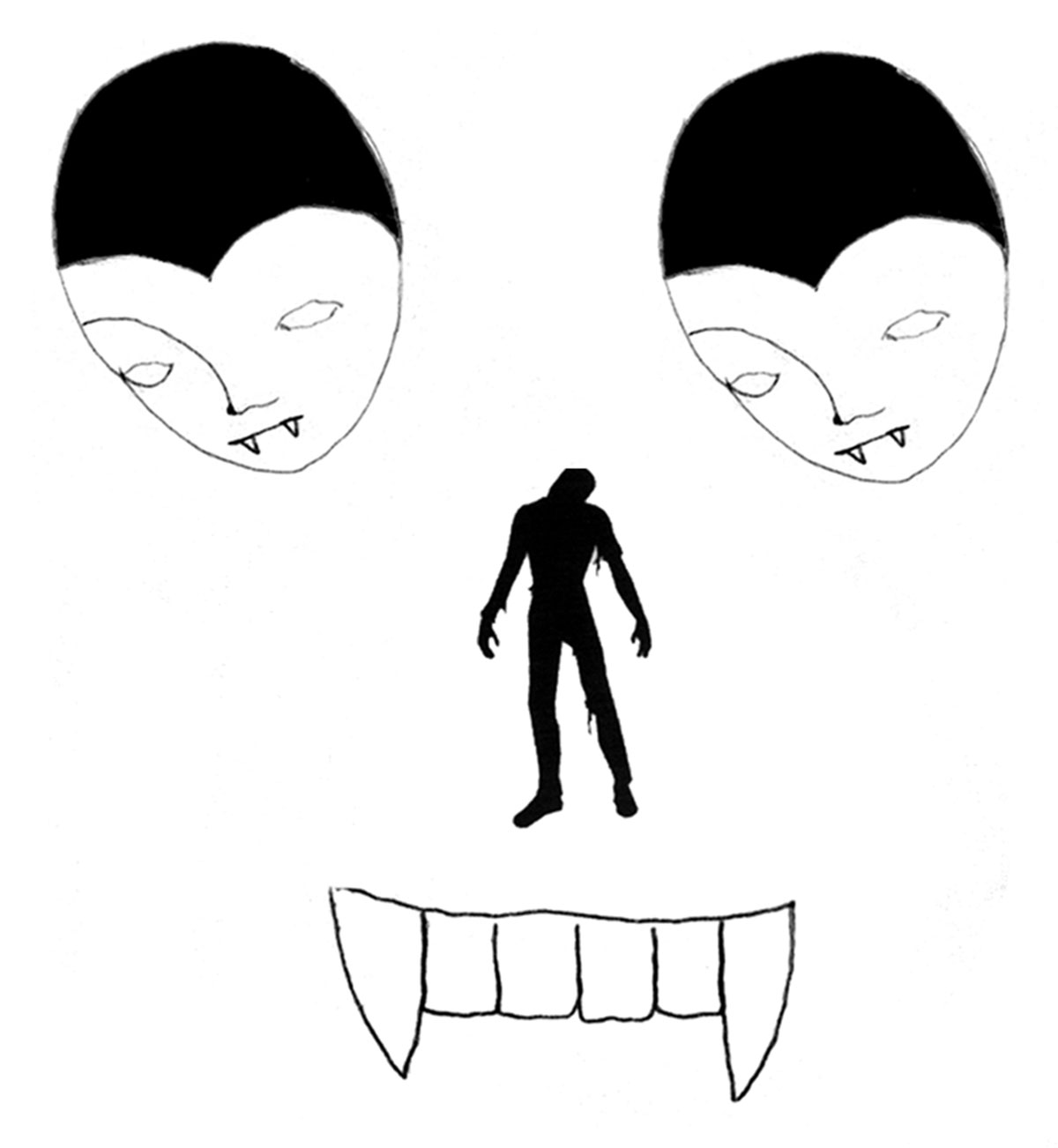A is for All Hallows Eve, or Halloween. All Hallows, also known as All Saints’ Day, takes place on November 1st. It is a day when Catholics celebrate those who have been beatified. All Souls’ Day is the day after All Saints’. The church decreed it a day to pray for those poor souls in purgatory—spirits suspended between heaven and hell. In the Middle Ages, the days were known collectively as Hallowtide. On the eve of All Souls’, churches would ring bells to scare away the dead. Some churches rang bells all night long.
B is for Robert Burns, the Scottish poet. Burns wrote “Halloween” in 1785. “Some merry, friendly, countra-folks / Together did convene, / To burn their nits, an’ pou their stocks, / An’ haud their Halloween / Fu’ blythe that night.” The poem refers to the Celtic Halloween custom of fortune-telling with nuts and apple peelings. Emigrating Scots brought the custom to Canada. Other Halloween customs carried here by Scots and Irish: bonfires, begging for food door to door, playing pranks on those who would not furnish food.
C is for Caledonian Society. Founded in Canada, in 1855, by affluent Scottish-Canadians, the Caledonian Society held banquets across Canada on Halloween. “We are not divining the future, or burning nuts, or catching the ‘snap apple,’ but [we are] celebrating Scottishness,” a speaker told Caledonians in Montreal, in 1885. In Toronto, George Brown was active in the Caledonians. Halloween here was a night of feasts: besides the Caledonian Society, different regiments of the military held a Halloween dinner, as did colleges at the University of Toronto. A meat market ran this ad on October 29, 1903: “HALLOWE’EN POULTRY. We are having heavy enquiries already.”
D is for Dennison Manufacturing Company. “You would be surprised,” said a young lady in Bookseller and Stationer magazine, in 1924, “how many people give Hallowe’en parties the last two weeks of October.” The young lady worked at a Toronto store. She supervised the crêpe-paper department. Dennison Manufacturing, of Framingham, Massachusetts, was the country’s main maker of crêpe paper. Dennison had a Toronto office in the early nineteen-hundreds. It was located on Wellington Street West. They were the first to sell yellow, orange, and black crêpe paper. They sold crêpe paper printed with owls, bats, jack-o’-lanterns, black cats with arched backs. They published The Bogie Book, the Bible of Halloween party guides. Place cards, Spanish moss, blindfolds, costumes—The Bogie Book told how to make them all from Dennison crêpe paper. Crêpe paper is combustible. The parties were firetraps.
E is for Eaton’s. “Don’t Miss The Hallowe’en Parade,” read an Eaton’s ad in the Toronto Daily Star, in 1929. The Eaton’s Santa Claus Parade involved several floats and many paraders. The Hallowe’en Parade? “A big pompous general will lead Felix, Bluebeard—A gypsy, a Zulu, and other familiar folk in a march around Toyland.”
F is for Frankenstein. Billy Pratt was a British lad. In 1909, he was flunking out of King’s College London. He was studying Chinese customs and languages; he wanted to act. He travelled to Canada and wound his way to Toronto. The Canada Company office found him work in Hamilton. Pratt became a farmer, but after three months, he drifted westward, working as a ditch digger, a tree cutter. Soon he convinced a stock company in Kamloops, British Columbia, to let him join the troupe. He changed his name to Boris Karloff. Karloff was a surname of some of his relatives; Boris was a name he said he “plucked out of the cold Canadian air.” Karloff toured Alberta and Saskatchewan, then he headed to Hollywood. His role as the monster in Frankenstein made him a star.

H is for Dr. H. H. Holmes. Holmes built himself a hotel in 1893, in Chicago, that boasted, in the words of the crime writer Connie Fillipelli, “iron-plated rooms, secret passages, hidden chutes that ended in the basement directly above zinc-lined tanks, sealed rooms with gas jets, stairways that led nowhere…trapdoors, a dissecting table, surgeons’ tools.” The building was a blueprint for every carnival and amusement park haunted house to come. It’s believed Holmes murdered more than a hundred people there. Then he went on the lam, landing in Toronto. He buried more bodies in the basement of a house near Barrie, Ontario. Pinkerton detectives shadowed him. Again he fled. They nabbed him in Boston, tried him in Philadelphia. In 1896 he was hanged.
I is for Isabel Grace Mackenzie. She died in 1917 and was survived by her son, William Lyon Mackenzie King. Mackenzie King became the prime minister of Canada. He hung a portrait of Isabel in his study, and kept it lit night and day. He spoke to her through a Ouija board and a crystal ball. He contacted her during séances. On October 6, 1935, his dead mother communicated the following to him: “Long ago I dreamt that you would succeed Sir Wilfrid Laurier. Long ago I knew God meant you to be prime minister. Long ago I [more than] knew that God meant that you would serve His holy will. Good night.” King was buried beside his mother in Mount Pleasant Cemetery.

K is for kisses. “Ducking for apples is rather out of late,” said the Everywoman’s Column of the Toronto Daily Star, in 1913. The topic: suggestions for Halloween parties. What did the column recommend? A taffy pull. “For the taffy pull, pull the taffy from buttered plates and save mother’s busy hands next day.” A taffy pull fulfilled two functions: it provided entertainment, and it provided eats. For hosts who didn’t have time to cook candy, stores sold it. At Halloween, a confectioner called Hunt’s sold a “Taffy Sucker, Face on Stand” for a nickel. In 1925, Eaton’s advertised a variety of taffies for Halloween: “peanut crisp, cocoanut and peanut, peanut and butterscotch.” During the Depression, the molasses kiss grew in popularity. No one seems to know why. Maybe molasses was cheaper than the ingredients for taffy? “Just In Time For Hallowe’en Parties,” read an ad from Loblaw’s, in 1933, “HALLOWEEN KISSES.” Fifteen cents bought a one-pound bag.

M is for David Manners, who played the handsome John Harker in Dracula. Manners was born in Halifax. His real name: Rauff de Ryther Daun Acklom. He studied forestry at the University of Toronto, and acted at Hart House Theatre. He hightailed it to Hollywood, where James Whale spotted him at a party. Whale cast him in his directorial debut, Journey’s End. Manners went on to work with directors Frank Capra and George Cukor. Tod Browning cast him in Dracula. In The Mummy, Manners played opposite Boris Karloff. In The Black Cat he starred with both Bela Lugosi and Karloff. He eventually abandoned the movies. Some suggest he quit, in part, because his studio suggested he marry a woman (Manners was gay). Retiring from acting, he retreated to the California desert. He wrote novels, and died in 1998. Horror movies, he once said, were his “only claim to movie fame.”
N is for noise. Making noise was at the heart of Halloween in its early days. Revellers tossed rocks and mud at windows and doors. They crafted noisemakers from tin cans, wooden spools, roofing tiles. A mid-century Halloween package produced for Canadian schoolteachers included instructions for making a Halloween megaphone. As early as 1900, Halloween noisemakers were being produced in Germany and exported to the United States. Styles for sale included horns, rattles, cranks, snappers, and clappers. “Weird Spirits a-gamboling,” said a 1913 ad for Mason and Risch Limited, of Toronto. “Witch Caps—Pumpkin Heads—Dominoes—Flowing Robes—Holed-Out Eyes. Strange phantasies they are! Yet, who and WHAT are they? Listen, then, they are the phantom witcheries of Hallowe’en!” The ad was peddling the Victor Victrola. “To sit snugly around the open fire, revelling in all the mystic rhythms of this bewitching fairyland of Hallowe’en, conjured up so wonderfully by the little Victrola, will make the evening’s frolics complete!” Which mystic rhythms did the store recommend? “The Dance o’ the Fairies,” “Peer Gynt,” and “Will-of-the-Wisp.”
P is for Philip Morris. In the nineteen-fifties he toured across Canada performing in a ghost show—a magic show with supernatural and horrific effects. His stage name: Dr. Evil. To garner publicity, he’d arrive early in a town and pull stunts. Drive a car blindfolded. Raffle off a “dead body.” The dead body was a frozen chicken. The R.C.M.P. once arrested him for dressing as a gorilla in public. Years later he invented an artificial spiderweb made of cloth. He made a killing.
Q is for Kew Beach. In 1945, Halloween hooligans burnt bonfires on Queen Street East. To feed the fire, they tore down fences and gates. Police were called. When they rode up on horses, they were pelted with stones and bricks. Hooligans blocked fire trucks with piles of concrete blocks. Thirteen troublemakers were taken in. A mob of seven thousand marched on the Main Street police station, hell-bent on springing the hooligans. Police cruisers rushed to the scene with tear gas. Water cannons dispersed the rioters. Five firemen were injured, as were a couple of cops.
R is for rides. Leon Cassidy needed a “dark ride.” In 1928, Cassidy was the co-owner of a small amusement park in New Jersey. Lots of amusement parks had an “old mill” ride: boats floated riders down canals decorated with scary scenery. Cassidy couldn’t afford to build a boat ride. So he put dodgem cars on a twisted track in a darkened pavilion. The Pretzel, he called it. It was a sensation. He started the Pretzel Amusement Ride Company to provide Pretzel rides to amusement parks across the continent. In 1930, he came to Canada. He put down a floor base at the Canadian National Exhibition. He laid tracks on the base, then covered them in a black tent, covered by another tent. It was probably the first cartable dark ride on a midway anywhere.
S is for slogans. “Trick or treat!” It’s what children scream on Halloween. But “trick or treat” didn’t become the customary catchphrase in Toronto until sometime around the Second World War. Before then, kids yelled, “Shell out!” “HALLOWE’EN” said an ad for a grocery store chain, in 1929, “with its joyous merriment….SHELLIN’ OUT to the district cut-ups, guessing who the strange figure is who knocks on your door.” From a Loblaw’s ad during the Depression: “When You Hear the Ultimatum! SHELL OUT. Be Ready with LOBLAW’S HALLOWE’EN KISSES.”
T is for Bill Tracy, a sculptor and engineer from New Jersey. In the nineteen-fifties, he revolutionized carnival dark rides by adding supernatural back-glows, glow-in-the dark stunts, trompe l’oeil to the decor. He created themed rides like the western ghost town and the haunted pirate ship. Sadly, he never invented safety features, like fire escapes. Wiring was makeshift. His rides tended to go up in flames. Very few still stand. The dark ride at Toronto’s Centreville Amusement Park—the Haunted Barrel Works—is decorated in a distinctly Tracy mode. And it is safe.
U is for University of Toronto. According to the historian Keith Walden, spontaneous Halloween celebrations erupted on campus in 1884. Students marched into the downtown core, singing, shattering lampposts, egging Eaton’s. Police dispersed them. Torontonians complained. The parade became an annual event. In 1899 students barged into the peanut gallery at Massey Hall, disrupting the evening’s performance. Veterinary students dangled dead horse parts over the balcony. Medical students banged human arm and leg bones. Some students slit open a political effigy, showering the audience below with chaff, hay, and excelsior. Hector Charlesworth, the future editor of Saturday Night, was sitting in the pit. His suit was ruined.

W is for whoopee cushion. In the early twentieth century, an American named S. S. Adams invented a plethora of classic pranks: dribble glasses, joy buzzers, sneezing powder. In 1930, a Canadian “rubber concern” approached him with a new novelty—a bladder that made a farting sound when someone sat on it. The rubber concern? The Jem Rubber Company, headquartered in Toronto, on Dundas Street West. It produced parts for printing companies. Adams turned down the fart cushion, so Jem manufactured it on its own. It was green, with a wooden nozzle. Stamped on the face was a picture of a Scottish lad. He sported spurs and a sporran, and carried a rifle. Wouldn’t bagpipes have been the obvious visual pun? The whoopee cushion was a sensation, even during the Depression. Adams ended up coming out with a copy of the Canadian cushion—the razzberry cushion, he called it.
X is for XEPN, a Mexican border-blaster radio station near the Rio Grande. In the late nineteen-twenties and early thirties, Bob Nelson and his brother Larry hosted an astrology show on the station. Listeners sent in a dollar and, in return, the Nelsons sent them a mimeographed horoscope. The Nelsons also operated Nelson Enterprises, of Columbus, Ohio, which supplied mediums and mentalists with fake fortune-telling equipment—mind-reading codes, mechanical crystal balls, two-way radios that could be concealed under capes or in turbans. “Be it distinctly understood,” said their 1931 mail-order catalogue, “that all effects described in this catalogue are accomplished by normal means, and are entirely divorced from any supernatural or supernormal powers.”
Y is for yellow. “Green and red have come [to] be the Christmas colors,” said a newspaper article from 1925, “just as black and yellow tell us of Hallowe’en.” An article in Bookseller and Stationer, from 1925, advised those celebrating Halloween to obtain “yellow and black crêpe paper for decorative purposes.” In 1927, an ad for crêpe paper in that same magazine recommended “Orange and Black for Hallowe’en.” In coming years, orange and black would come to be considered the Halloween palette par excellence. What changed? Why did yellow fade out and orange fill in?